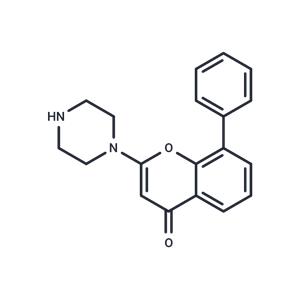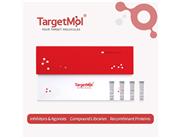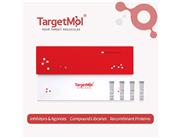| Kinase Assay | Mammalian DNA-PK (500 ng/μL) is isolated from HeLa cell nuclear extract after chromatography using Q-Sepharose, S-Sepharose, and Heparin agarose. DNA-PK (250 ng) activity is measured at 30°C, in a final volume of 40 μL, in buffer containing 25 mM HEPES (pH 7.4), 12.5 mM MgCl2, 50 mM KCl, 1 mM DTT, 10% v/v Glycerol, 0.1% w/v NP-40, and 1 mg of the substrate GST-p53N66 (the NH2-terminal 66 amino acid residues of human wild-type p53 fused to glutathione S-transferase) in polypropylene 96-well plates. To the assay mix, varying concentrations of inhibitor (in DMSO at a final concentration of 1% v/v) are added. After 10 min of incubation, ATP is added to give a final concentration of 50 μM, along with a 30-mer double-stranded DNA oligonucleotide (final concentration of 0.5 ng/mL), to initiate the reaction. After 1 h with shaking, 150 μL of PBS are added to the reaction, and 5 μL are then transferred to a 96-well opaque white plate containing 45 μL of PBS per well, where the GSTp53N66 substrate is allowed to bind to the wells for 1 h. To detect the phosphorylation event on the serine 15 residue of p53 elicited by DNA-PK, a p53 phosphoserine-15 antibody is used in a basic ELISA procedure. An antirabbit horseradish peroxidase-conjugated secondary antibody is then used in the ELISA before the addition of chemiluminescence reagent to detect the signal as measured by chemiluminescent counting via a TopCount NXT[1]. |

 United States
United States



